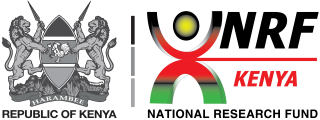Intergrated Water Resources Management
Permanent URI for this collection
Browse
Browsing Intergrated Water Resources Management by Funder "Flemish Interuniversity Council-University Development Co-operation"
Now showing 1 - 2 of 2
Results Per Page
Sort Options
Publication Communication factors influencing adoption of soil and water conservation technologies in the dry zones of Tharaka-Nithi County, Kenya(Heliyon, 2021-10-21) Njenga, Maureen Wairimu; Mugwe, Jayne Njeri; Mogaka, Hezron; Nyabuga, George; Kiboi, Milka; Ngetich, Felix; Mucheru-Muna, Monicah; Sijali, Isaya; Mugendi, DanielIntegrated soil fertility and soil water conservation technologies are possible solutions to the low per capita food production in Sub-Saharan Africa (SSA). Nonetheless, the rate of adoption of these technologies by smallholder farmers has stagnated over the years despite being recommended. This has been attributed to the existence of wide communication gaps among researchers, extension agents, and farmers. Therefore, this study aimed to assess the influence of communication factors on the adoption of the selected technologies among smallholder farmers in the drylands of Tharaka-Nithi County. We used a cross-sectional survey design and collected data using an interview schedule from 400 randomly selected farming households. Binary logistic regression was employed for data analysis. Results showed that accessibility of extension agents after introducing the technology significantly influenced the adoption of combined organic and inorganic fertilizers (p = 0.056), mulch (p = 0.051), and Zai pit (p = 0.058). Similarly, practical orientation significantly influenced the adoption of combined organic and inorganic fertilizers (p = 0.001), mulch (p = 0.010), and Zai pit (p = 0.003). Information repetition significantly influenced the adoption of combined organic and inorganic fertilizers, mulch, and Zai pit at p-value 0.003, 0.001, and 0.001, respectively. Training was essential for mulch and Zai pit technologies at (p = 0.030) and (p = 0.001) respectively, while farmer group membership significantly influenced adoption for combined organic and inorganic fertilizers (p = 0.045) and Zai pit (p = 0.057) technologies. Extension agents should increase their interactions with farmers after the introduction of technologies. Equally use of demonstrations should be encouraged during the dissemination of these technologies among the farmers as they enhance the chances of adoption of the technologies.Publication Soil Water Use Efficiency under Integrated Soil Management Practices in the Drylands of Kenya(Heliyon, 2023-05-06) Oduor, O. Nathan; Mucheru-Muna, Monicah; Mugwe, Nyanuga Jayne; Sijali, Isaya; Nyabuga, George; Mugendi, N. DanielSoil moisture scarcity and soil fertility decline in the drylands contribute to declining crop productivity. The possible synergistic effects of integrating soil & water conservation, and soilfertility management practices on soil moisture, and hence water use efficiency (WUE) in thedrylands of Tharaka-Nithi County in Kenya was assessed. The experiment was laid in a three bythree split plot arrangement, with four replications, for four cropping seasons. Minimum tillagewith mulch, tied ridges, and conventional tillage formed the main plot factors. The sub-plotfactors included animal manure plus fertilizer at 120, 60, and 30 N kg ha− 1. There was significant improvement in soil moisture by 35 and 28% by minimum tillage with mulch and tied ridges,respectively, compared to conventional tillage. Manure plus fertilizer rates of 120 and 60 N kgha− 1 had significantly lower soil moisture by 12 and 10%, respectively than the 30 N kg ha− 1across the seasons. The WUE was significantly enhanced by 150 and 65% under minimum tillagewith mulch and tied ridges, respectively, compared to conventional tillage. Compared with 30 Nkg ha− 1, the 120 N kg ha− 1 and 60 kg ha− 1 significantly enhanced the WUE by 66 and 25%,respectively. Across the seasons, the best treatment combination for improving WUE was minimum tillage with mulch at 120 N kg ha− 1 rate of manure plus fertilizer.

